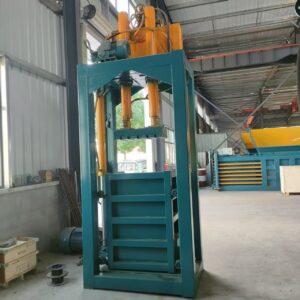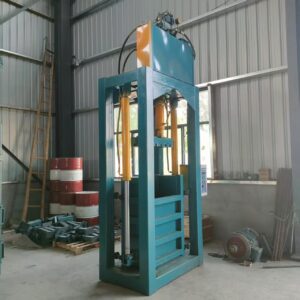Introduction
In the fast-paced world of fashion and apparel manufacturing, efficiency and presentation are key. Garment packing machines have emerged as essential tools for businesses looking to streamline their operations, reduce labor costs, and ensure consistent, high-quality packaging. Whether you’re a small boutique or a large-scale clothing manufacturer, investing in the right packing machine can significantly enhance productivity and customer satisfaction.
This comprehensive guide explores the different types of garment packing machines, their benefits, key features to consider, and how they are transforming the apparel industry.
Why Garment Packing Machines Matter

The clothing industry is highly competitive, and brands must ensure their products arrive in pristine condition while minimizing packaging costs. Manual packing is time-consuming, labor-intensive, and prone to inconsistencies. Garment packing machines automate the process, offering:
-
Increased Efficiency – Machines can pack hundreds or even thousands of garments per hour, far surpassing manual labor.
-
Consistency & Professionalism – Automated systems ensure every item is folded and packed uniformly, enhancing brand image.
-
Cost Savings – Reduced labor costs and minimized material waste lead to higher profitability.
-
Hygiene & Safety – Automated packing reduces human contact, which is especially important in post-pandemic standards.
Types of Garment Packing Machines
1. Automatic Garment Folding & Packing Machines
These machines fold clothes neatly and insert them into poly bags or boxes. Ideal for T-shirts, jeans, and other apparel, they ensure a professional presentation while saving time.
Best for: Apparel manufacturers, e-commerce businesses, and retail packaging.
2. Vacuum Packing Machines
Used primarily for bulk shipping, vacuum packing compresses garments to save space and reduce shipping costs. It also protects clothes from moisture and dust.
Best for: Exporters, wholesalers, and storage facilities.
3. Hanging Garment Packing Machines
Designed for high-end clothing such as suits, dresses, and formal wear, these machines pack garments on hangers and cover them with plastic or garment bags.
Best for: Boutiques, dry cleaners, and luxury apparel brands.
4. Shrink Wrapping Machines
These machines use heat to seal garments in shrink film, providing a tight, tamper-proof packaging solution.
Best for: Retail-ready packaging and bundled clothing sets.
5. Carton Packing Machines
Automated systems that place folded garments into boxes, seal them, and label them for shipping.
Best for: E-commerce fulfillment centers and large-scale distributors.
Key Features to Consider When Choosing a Garment Packing Machine
Before investing in a packing machine, consider the following factors:

1. Production Capacity
-
How many garments do you need to pack per hour?
-
Low-capacity machines (100-500 pieces/hour) suit small businesses, while high-speed machines (1,000+ pieces/hour) are ideal for large manufacturers.
2. Packaging Material Compatibility
-
Does the machine work with poly bags, cardboard boxes, or shrink film?
-
Some machines allow for custom branding on packaging.
3. Automation Level
-
Fully automatic machines require minimal human intervention.
-
Semi-automatic models may need an operator to feed garments.
4. Space & Installation Requirements
-
Ensure your facility has enough space for the machine and any conveyor systems.
5. Maintenance & Durability
-
Look for machines with easy-to-clean components and reliable after-sales support.
6. Cost & ROI
-
While high-end machines have a higher upfront cost, they often pay for themselves through labor savings and efficiency gains.
How Garment Packing Machines Are Transforming the Industry
1. Boosting E-Commerce Efficiency
With the rise of online shopping, brands must ship orders quickly and securely. Automated packing machines ensure fast, damage-free packaging, improving customer satisfaction.
2. Sustainable Packaging Solutions
Many modern packing machines support eco-friendly materials like biodegradable poly bags, helping brands reduce their environmental footprint.
3. Reducing Labor Shortage Impact
Many apparel manufacturers face labor shortages. Automation reduces dependency on manual workers while maintaining high output.
4. Enhancing Brand Presentation
Consistently well-packed garments create a premium unboxing experience, increasing brand loyalty.
Choosing the Right Garment Packing Machine for Your Business
For Small Businesses & Startups
-
Recommended Machine: Semi-automatic folding and packing machines.
-
Why? Lower initial investment with moderate speed.
For Mid-Sized Apparel Brands
-
Recommended Machine: Fully automatic folding and bagging machines.
-
Why? Balances speed and cost, ideal for growing businesses.
For Large Manufacturers & Exporters
-
Recommended Machine: High-speed automated packing lines with vacuum or carton sealing.
-
Why? Maximizes efficiency for bulk orders.
Future Trends in Garment Packing Technology
-
AI & Smart Packaging: Machines with AI-driven quality control to detect folding or packing errors.
-
Robotic Integration: Collaborative robots (cobots) working alongside packing machines for seamless operations.
-
Sustainable Innovations: More machines supporting recycled and compostable packaging materials.
Conclusion
Garment packing machines are no longer a luxury but a necessity in the modern apparel industry. By automating the packing process, businesses can achieve higher efficiency, reduce costs, and deliver a superior product presentation.
Whether you’re a small boutique or a global fashion brand, investing in the right packing machine can give you a competitive edge in a crowded market. Evaluate your needs, explore the latest technologies, and choose a machine that aligns with your production goals.
Ready to upgrade your garment packing process? Explore our range of high-quality packing machines designed for apparel businesses of all sizes!
This article provides a detailed overview of garment packing machines while keeping it engaging for readers on an independent e-commerce or B2B website. It can be further optimized with internal links, customer testimonials, and product recommendations. Would you like any modifications or additional sections?
